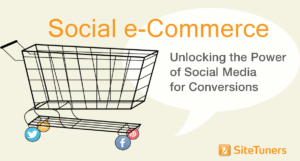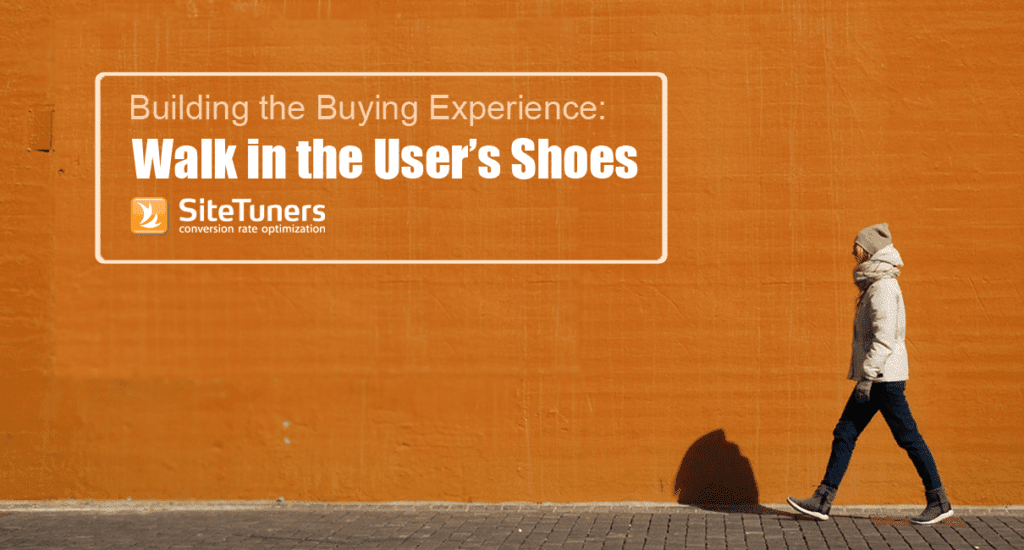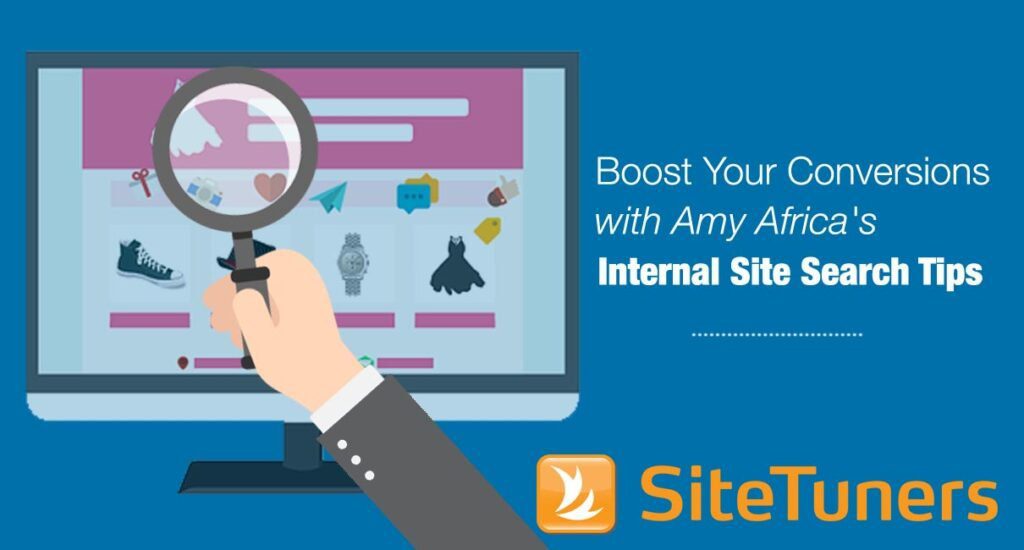Summary: Explore the transformative impact of Augmented Reality (AR) in e-commerce. This blog post delves into how 3D AR e-commerce and online shops are trying augmented reality, significantly enhancing the online shopping experience. It covers the rapid growth, consumer adoption, and how AR in e-commerce is reshaping the retail landscape, offering insights into the future of AR and VR in e-commerce. Discover how implementing AR can lead to a competitive advantage, revolutionize customer engagement, and conversion rate optimization (CRO) in the digital marketplace.
The Role of Augmented Reality (AR) in Enhancing Online Shopping Experience
What is augmented reality? This question is becoming increasingly relevant in retail, especially e-commerce. Augmented Reality (AR) offers an immersive experience that empowers customers to visualize and customize products in 3D, bridging retail’s digital and physical realms. This 3D AR e-commerce technology is reshaping how consumers engage with online shops. Online shops are trying augmented reality to enhance the customer’s buying experience by providing more interactive and engaging platforms.
The growth and impact of AR in the retail industry, particularly in how online shops are augmented reality, have been impressive. From 2019 to 2023, the AR market has been projected to grow at a compound annual growth rate of 77%. This significant growth indicates the increasing adoption of AR by both businesses and consumers, suggesting a fundamental shift in the way shopping is experienced online. By 2023, the AR market volume is expected to reach $11.58 billion, highlighting the economic potential of AR technology in transforming the retail landscape.
Furthermore, the widespread adoption of AR in e-commerce is not only a testament to the popularity of AR but also to its effectiveness in engaging consumers. Over 32% of consumers currently use AR while shopping, and by the end of 2023, it is estimated that there will be approximately 1.3 billion AR device users. This widespread adoption is not only a testament to the popularity of AR but also to its effectiveness in engaging consumers. AR is known to produce 200% more engagement than non-AR methods, demonstrating its powerful impact on enhancing the online shopping experience.
As we explore how online shops are trying augmented reality, it’s clear that AR is not just a passing trend but a fundamental shift in the retail industry. Augmented Reality is rapidly emerging as a pivotal technology in e-commerce, significantly enhancing the online shopping experience and offering new avenues for Conversion Rate Optimization (CRO). Its ability to provide immersive, interactive, and personalized shopping experiences reshapes consumer expectations and opens new frontiers for online retailers. As we delve further into AR’s role in e-commerce, it is clear that this technology is not just a passing trend but a fundamental shift in the retail industry.
Understanding AR in Online Shopping
Augmented Reality (AR) is revolutionizing the online shopping experience by blending the digital and physical worlds. This innovative approach is a significant part of e-commerce direct marketing using augmented reality. Customers can interact with products in a more immersive way, enhancing their shopping journey.
Statistics highlight the growing interest in AR among consumers. For example, in Poland and the U.S., up to 40% and 37% of consumers, respectively, have expressed a desire for AR tools in their online shopping experience. The future of AR and VR in e-commerce looks promising, as a Google Consumer AR Survey found that 66% of people are interested in using AR for shopping assistance.
The market for AR in e-commerce is experiencing rapid growth. According to Grandview Research, the global augmented shopping market is expanding at a CAGR (Growth Annual Compound Rate) of 47.1%, with its value projected to continue rising significantly through 2027. This growth is indicative of AR’s increasing importance in the retail sector.
Moreover, AR’s impact on purchase decisions is noteworthy. About 57% of users are likelier to buy from brands that offer an AR experience, demonstrating AR’s potential to influence on customer behavior. Currently, over 32% of consumers use AR while shopping, which is expected to grow, emphasizing how online shops are augmented reality.
In practical terms, AR in online shopping manifests in various forms:
- Virtual Try-Ons: Customers can try on clothes, accessories, or even makeup virtually, giving them a realistic idea of how these products would look and fit.
- 3D Product Visualization: Shoppers can view products in 3D, allowing them to rotate, zoom, and interact with items, offering a more profound understanding than traditional 2D images.
- Room Planning Tools: AR enables customers to visualize how home decor and furniture products look in their living spaces.
These applications show how online shops try augmented reality to enhance the customer experience. The integration of AR in online shopping platforms is transforming consumer interactions with products. By offering interactive and engaging experiences, AR bridges the gap between online convenience and physical retail tangibility, making its role in the future of online shopping increasingly significant.

Benefits of AR in E-Commerce
Augmented Reality (AR) is transforming the e-commerce landscape, offering numerous benefits that enhance both the shopping experience for consumers and the operational success of retailers. The impact of AR in e-commerce, a key part of retail online shops trying augmented reality, is backed by compelling statistics:
- Increased Engagement and Sales: AR technology significantly boosts customer engagement and sales. A report from XR Today notes that 57% of customers are likelier to buy from a brand incorporating AR into their shopping experience. Furthermore, customers engaged with AR on an app spend 20.7% more time and view 1.28 times more products on average. This increased engagement can translate into higher sales and improved customer loyalty.
- Growing Market and Revenue: The AR market in e-commerce is rapidly expanding. The 2023 mobile augmented reality revenue is estimated to reach $12.8 billion. This growth indicates the increasing adoption of AR technology in retail and its potential for generating significant revenue.
- Consumer Adoption and Interest: The adoption of AR in shopping is growing, with over 32% of consumers currently using AR while shopping. Moreover, 92% of Gen Z consumers desire to use AR tools for e-commerce, highlighting the technology’s appeal to the younger, tech-savvy demographic. This widespread interest suggests that AR is not just a fleeting trend but a fundamental shift in consumer shopping behavior.
- Enhanced Shopping Experience: AR provides a unique shopping experience by allowing consumers to visualize products in real-time and their environment. This can be particularly beneficial for items like furniture and fashion, where size, fit, and style are crucial. The ability to virtually “try before you buy” addresses many of the uncertainties associated with online shopping, leading to more confident purchasing decisions.
Establish Your Goals and KPIs
When embarking on conversion audits, begin by setting clear, measurable goals. These range from increasing conversion rates to maximizing revenue per visitor. Ensure these objectives are specific and achievable to measure success against your key performance indicators (KPIs).
Document your immediate targets, like increasing conversion rates, and long-term goals, such as enhancing micro conversions.
Decide if your primary aim is to enhance brand awareness or increase leads, as each goal requires tracking different KPIs. For brand awareness, consider KPIs like blog subscribers (Micro conversions). Identifying these goals early helps keep your CRO strategy focused and aligned with your business objectives. For your macro conversions, this could be purchases, lead form submissions, or even customer lifetime value.
- Competitive Advantage: Retailers employing AR technology can gain a competitive edge by offering an innovative and interactive shopping experience. This technology, a core part of how online shops try augmented reality, differentiates them from competitors and can attract tech-savvy consumers looking for a more engaging and personalized shopping experience.
AR in e-commerce offers many benefits, from increasing customer engagement and sales to providing a unique and enhanced shopping experience. The technology’s rapid adoption and market growth signal a significant shift in the retail industry, making AR an essential tool for businesses looking to innovate and stay competitive in the digital marketplace.

AR’s Impact on Conversion Rate Optimization (CRO)
The influence of Augmented Reality (AR) in e-commerce is profound, particularly in its ability to enhance Conversion Rate Optimization (CRO). Various studies and data underscore this impact:
- Significant Increase in Conversion Rates: The introduction of AR in online shopping, an essential aspect of how augmented reality will shape e-commerce in the next six months, has led to a notable increase in conversion rates. According to Marketing Dive, web AR products can increase the conversion rate of online purchases by almost 30%. Shopify’s data reveals an even more striking figure, showing that the conversion rate for products with AR content is 94% higher than those without AR.
- Substantial Return on Investment (ROI): The world’s most extensive web-based AR implementation demonstrated a 112% increase in conversions and a 22x ROI in online commerce, emphasizing AR’s effectiveness over traditional 2D images and videos.
- Case Study Examples: Real-world examples illustrate AR’s effectiveness in boosting conversions. Sephora’s Virtual Artist tool, an AR feature, increased conversion rates by 11.4%, showcasing the potential of AR to drive significant business growth.
- Enhanced Engagement: AR technology produces significantly more engagement than non-AR methods. This heightened engagement is critical to improving conversion rates, as more engaged customers are more likely to purchase.
- Growing Consumer Use: Over 32% of consumers currently use AR while shopping, which is expected to grow with the increasing availability of AR-enabled devices. This growing use indicates a shift in consumer behavior towards favoring AR-enhanced shopping experiences.
AR is a novel technology and a potent tool for improving conversion rates in e-commerce. By offering interactive experiences, AR bridges the gap between online browsing and physical product interaction, leading to more confident purchasing decisions and higher conversion rates. As more companies adopt AR, its role in CRO will likely become increasingly significant.
Challenges of Implementing Augmented Reality in E-Commerce
Implementing Augmented Reality (AR) in e-commerce presents several business challenges and considerations. These range from technical aspects to user experience and privacy concerns, which are crucial in e-commerce direct marketing using augmented reality.
Technical Challenges and Considerations:
- Hardware Compatibility: Ensuring AR solutions are compatible with various devices, including mobile devices and wearables, is crucial. This involves considering factors like camera quality and processing power of devices, as well as compatibility with popular AR wearables like Microsoft’s HoloLens or Magic Leap.
- AR Development Platforms: Choosing the proper development tools is essential. Options include ARKit for iOS, ARCore for Android, and Unity3D. The choice depends on the desired features and target audience.
- 3D Modelling and Rendering: High-quality 3D models are vital for a practical AR experience. Tools like Blender, Maya, or ZBrush can be used, with attention to file size, to balance quality and loading speed.
- Image Recognition and Tracking: Robust image recognition capabilities are necessary for practical AR functionality. Platforms such as Vuforia or Wikitude offer powerful image and object-tracking capabilities.
- UI/UX Design: The user interface and experience must be intuitive, especially for users unfamiliar with AR. The design should facilitate a seamless AR experience with clear instructions.
- Connectivity and Latency: AR applications often rely on cloud support for heavy computations, necessitating robust server support and optimized content delivery to reduce latency.
- Storage Considerations: AR components, especially 3D models, can be storage-intensive. Solutions like cloud storage or edge computing should be considered based on the complexity of the AR application.
- Security and Privacy: Given that AR applications may access users’ cameras, location, and other sensors, it’s imperative to ensure data encryption and transparent data usage policies.
- Integration with E-commerce Platform: Seamless integration of AR solutions with existing e-commerce platforms is crucial and might involve API integrations or SDKs.
- Testing and Quality Assurance: Thorough testing of AR features for bugs and ensuring compatibility across devices and browsers is essential. Performance metrics like loading time, recognition accuracy, and battery consumption should be measured.
- Scalability: As the business grows, so will AR needs. Choosing scalable solutions to add more products or features over time is essential.
- User Feedback and Analytics: After deployment, collecting user feedback to refine the AR experience and using analytics tools to gauge AR’s impact on sales, user engagement, and other KPIs is vital.

25 Conversion Rate Optimization Tips for E-commerce Websites in 2022
Other Considerations:
- Consumer Behavior and Expectations: Retailers must consider how consumers interact with AR and their expectations. For instance, online shoppers return 15% to 30% of their purchases due to the lack of real-life product context, which AR can help address.
- Market and Industry Trends: Staying informed about the latest trends in AR and e-commerce is vital. Understanding these trends helps businesses stay competitive and offer relevant AR experiences that resonate with current market demands.
In summary, while AR technology holds immense potential to enhance online shopping and increase sales, its implementation presents various challenges and considerations. Effectively addressing these aspects is crucial for leveraging the full potential of AR in e-commerce.
This continuation emphasizes the importance of understanding consumer behavior and market trends in the successful implementation of AR in e-commerce, along with the need for ongoing feedback and analytics.
The Future of AR in Online Shopping
Augmented Reality (AR) is poised to continue its transformative impact on e-commerce, with trends and projections indicating a significant role in online shopping, including areas like 3d AR e-commerce and the future of AR and VR in e-commerce.
Expanding AR Market and User Base:
- Growing AR User Base: The number of AR device users is forecasted to reach a remarkable 1.4 billion by the end of 2023, showcasing the rapid expansion of AR technology’s reach in the consumer market. This figure is expected to increase to 1.73 billion in 2024, highlighting the accelerating pace of AR adoption globally.
- Market Value Projections: The AR market is experiencing remarkable growth, with its estimated value projected to reach $50 billion by 2024. This rapid expansion signifies its widespread adoption and underscores its significant role in the future of AR and VR in e-commerce.
- Increased Consumer Engagement: AR experiences are 200% more engaging than non-AR equivalents. This heightened engagement level is crucial for e-commerce, leading to increased interest in products and potentially higher sales.
Impact on Shopping Behavior and Preferences:
- Influence on Shopping Frequency: AR can enhance the online shopping experience by providing details that traditional photos cannot. This capability can increase customer satisfaction and loyalty, with many consumers indicating they would shop more often if they used AR. Notably, 71% of consumers say they would shop more often if they used AR, highlighting the potential of AR to increase shopping frequency.
- Willingness to Pay More: Consumers are willing to pay more for products they can customize in AR, reflecting a trend towards e-commerce direct marketing using augmented reality.
- AR Adoption in Shopping: As of 2020, 32% of consumers were using AR while shopping, and this number is expected to grow. The high satisfaction levels reported by mobile AR users (73%) demonstrate AR’s effectiveness in enhancing the shopping experience.
Emerging Trends:
- Integration with the Metaverse: The Metaverse’s blend of physical, augmented, and virtual realities significantly influences 3d AR e-commerce. This trend creates a dynamic, computer-generated environment for interaction.
- Focus on Fashion, Beauty, and Home Goods: E-marketer’s identification of these categories as high potential areas for AR in the metaverse aligns with the trend of online shops trying augmented reality for a more immersive shopping experience.
- Adoption by Major Tech Companies: The increasing investment in AR technology by major tech companies, such as the development of Apple’s AR headset/glasses, indicates a future where AR in e-commerce becomes more integrated into everyday life, showcasing a clear vision for augmented reality’s role in consumer interaction.
The future of AR in online shopping is marked by rapid growth, increasing user adoption, and an evolving landscape that includes the integration of AR with new platforms like the Metaverse. As AR technology becomes more advanced and accessible, its role in enhancing the online shopping experience and influencing consumer behavior is poised to become even more significant.

Social e-Commerce: Unlocking the Power of Social Media for Conversions
The Transformative Role of AR in Online Shopping
AR’s ability to create immersive and interactive shopping experiences effectively addresses the limitations of traditional online shopping. This technology boosts buyer confidence, increases customer engagement, and influences consumers’ willingness to pay more for customized experiences. Integrating AR with emerging platforms like the Metaverse opens new frontiers in e-commerce.
In summary, Augmented Reality in e-commerce is rapidly evolving, offering businesses new ways to engage and captivate customers. Its impact on consumer behavior, market trends, and online shopping experience signifies a significant shift in the retail landscape. AR is poised to become an indispensable component of the digital shopping experience as technology advances, transforming how consumers interact with products and brands online.


